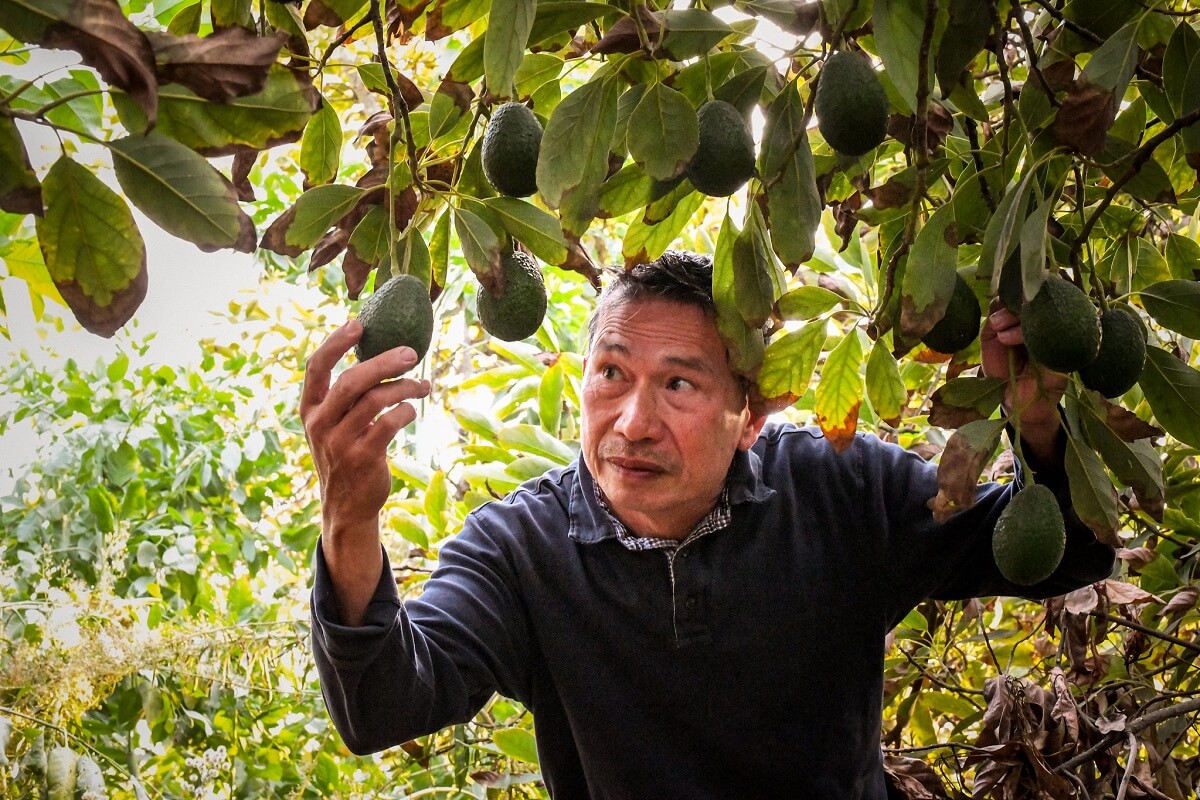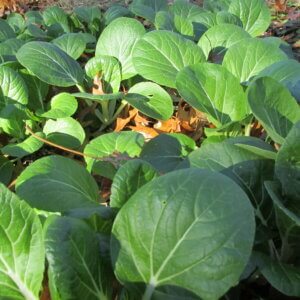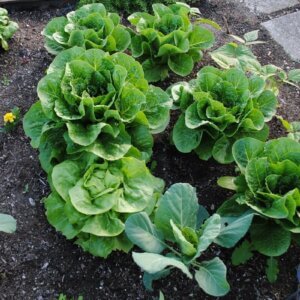Avocados have long been considered a perfect food. If the avocado were newly discovered today, it would be marketed as a miracle food.
Irresistibly flavorful with a smooth, creamy texture, avocados should be part of everyone’s daily diet.
Indigenous to Mexico and Central America, avocado trees thrive in sub-tropical and tropical climates around the world. Avocados have a deep green-skinned, fleshy body that ripens to a deep, purplish-green after harvesting.
It’s easy to germinate an indoor ornamental avocado tree in a glass of water on the kitchen window sill. Cultivating an avocado orchard that consistently produces firm, flavorful fruit is a bit more of a challenge. Avocado trees fail to grow true to type, so the seed from the delicious orb purchased at the fresh market may or may not produce a similar fruit. Read on to learn more about how to grow avocados on your homestead.
Where and When to Grow Avocados
Avocado plant orchards should be established from transplanted seedlings. It’s best to select preferred varieties grafted onto healthy rootstock that are adaptable to your local climate, soil, and growing conditions. Avocados do well in United States Plant Hardiness Zones 9 through 11.
The best time to plant avocado plants outdoors is between early March and late June. Planting in the spring allows the roots to have adequate time to acclimate to new growing conditions before the intense heat of summer arrives.
Planting Avocado Trees
Grafted avocado trees are available for purchase online or from local nurseries and garden centers. Keep in mind that it takes at least five years before your trees will produce fruit. If you are going to invest the time and effort required to establish a profitable avocado orchard, it is wise to start with the best available varieties purchased from a reputable grower.
When they’re started from seed, avocado trees require a warm climate, plenty of sunshine, and well-drained soil. Space trees 50 to 75 feet apart. Mature avocado trees have a broad spreading canopy that is typically as wide as the tree is tall. When planting avocado trees, give them plenty of room to grow. Avoid planting near buildings, overhead utility lines, cesspools, septic tanks, underground utilities, fences, or property lines.
Depending on the variety, evergreen avocado trees can grow anywhere from 50 to 75 feet tall. A mature avocado tree will produce a bountiful crop of individual fruits weighing from a few ounces to more than 4 pounds.
Start an avocado tree by planting 4 to 6 inches deep in organic soil free of pesticides and herbicides. Make sure the avocado seedling receives plenty of water, and you will soon have a tree that will feed generations far into the future.
Within 5 to 7 years, you can expect your avocado tree to produce between 200 and 300 individual fruits each season. Mature avocado trees tend to do best in alternate years. One year the harvest will be sparse, the next year abundant.
Growing Avocados From a Pit
If you reside in a northern climate, you can still grow an avocado pit in a sunny window or greenhouse. Poke three wooden toothpicks into the side of an avocado pit in a triangular pattern around the middle.
Center the toothpicks on a small water glass. Fill the glass with water until the bottom of the pit is submerged. Place in a sunny location and maintain the water level until the seed sprouts and produces a large quantity of fine, white roots.

Once roots are evident, plant the rooted avocado seed in a 5-gallon pot with good soil drainage. Avocado trees grown indoors will not bear fruit, but they make an attractive, conversation-provoking houseplant.
Related Post: Low-Light Plants
Check out the video below for a step by step process for how to grow an avocado plant from a pit.
How to Eat Avocados
Avocados are at their most flavorful and ready for consumption when somewhat soft and ripe. Avocados fail to ripen on the tree. They only ripen after harvest, or when they fall from the tree. Avocados can be picked as needed and allowed to mature at room temperature in a sunny spot.
Accelerate the ripening process by placing avocados in a brown paper bag or in proximity to ripening bananas or apples. Gases these other fruits produce when ripening will quickly soften your avocados.
Related Post: How to Store Apples
Peel an avocado carefully to preserve its nutrient-rich properties. Research indicates that the most significant concentration of carotenoids, minerals, and vitamins lies just beneath the green or dark brown skin.

You do not want to remove the nutrient dense green flesh just under the leathery skin. The right way to peel an avocado is to cut it lengthwise, and then twist the two halves to separate. Remove the pit and cut the avocado halves into slices. Peel off the skin as you would a banana.
Allow the remaining fruit to hang on the tree until you are ready to use it. Choose fruits that are free of marks, dents, or indications of bruising. Avocados should be firm, yet yield to gentle pressure. Firm avocados are best for slicing and adding to salads and sandwiches. Soft, overly ripened avocados are perfect for sauces, dips, desserts, and drinks.
Nutritional Value
A buttery green fruit, the luscious avocado (Persea americana) is ranked by dietary experts as a superfood. Unfortunately, avocados have earned an unfavorable reputation as being high in fat.
An average avocado contains 240 calories and 24 grams of fat. Although about 90 percent of calories in an avocado come from fat, it’s considered heart-healthy fat. A nutrient powerhouse, avocados are high in monounsaturated fats (3 grams per serving).
A few other nutritional benefits of avocados:
- Avocados are sodium-free.
- An average avocado provides a source of protein, potassium, iron, phosphorous, calcium, and niacin.
- One serving, or a third of an avocado, provides 4 milligrams vitamin C or 4 percent of the recommended daily allowance.
- High in fiber, nutrient dense avocados are a rich source of B vitamins.
- Avocados are an excellent source of vitamins E, A, D, and K.
- A single avocado contains up to 9 grams of fiber and 20 essential ingredients (including copper and iron) required for optimum health and well-being. It’s a fact, ounce for ounce, avocados offer more than 35 percent more potassium than bananas.
- Avocados contain a broad array of carotenoids.
- Antioxidant-rich avocados help prevent cardiovascular disease, lower cholesterol, and help reduce high blood pressure levels.
Other Uses for Avocado
First Food for Baby
Excellent first foods for babies, avocados are soft, palatable, and easily digested. Sweeten mashed avocados with a few drops of organic honey to supplement the diet of infants.

When toddlers are ready for “finger foods,” cut avocados into small chunks. Children love the bright color and creamy consistency of avocados. Keep in mind, though, that honey should only be given to children over the age of 1.
Skin and Hair Care
Applying the expressed oil of the avocado seed directly to the skin keeps the skin supple and moist, and helps rough red skin, eczemas, and psoriasis patches to heal faster. Avocado oil, prized for its ease of absorption and healing properties, is an excellent sunscreen and windburn protection.
Apply avocado oil to soothe chapped lips. Avocado oil, massaged into the scalp daily, stimulates hair growth. In the Caribbean, talc made by finely grinding the dried pit of the avocado is used to treat dandruff.
Healing Avocado Face Mask
To create a natural, healing facial mask, mash the flesh of one ripe avocado and two tablespoons of honey with two teaspoons of oatmeal, and apply to the face.
Allow the creamy mixture to rest on the face for 20 to 30 minutes. Rinse off the paste with lukewarm water.
The masticated flesh of the avocado is also a soothing shave cream. Some cultures chew avocado seed to reduce toothache pain or chew on the skin of the fruit to relieve dysentery and ward off internal parasites.
Steep the pit for 15 minutes in a small pot of boiling water. Cool the liquid and use as a poultice for sprains, muscle aches, and bruises.
References
- California Avocado Commission
- The Role of Avocados in Complementary and Transitional Feeding, U.S. National Library Of Medicine
- Avocados May Help Prevent Oral Cancer, The Ohio State University











































Leave a Reply